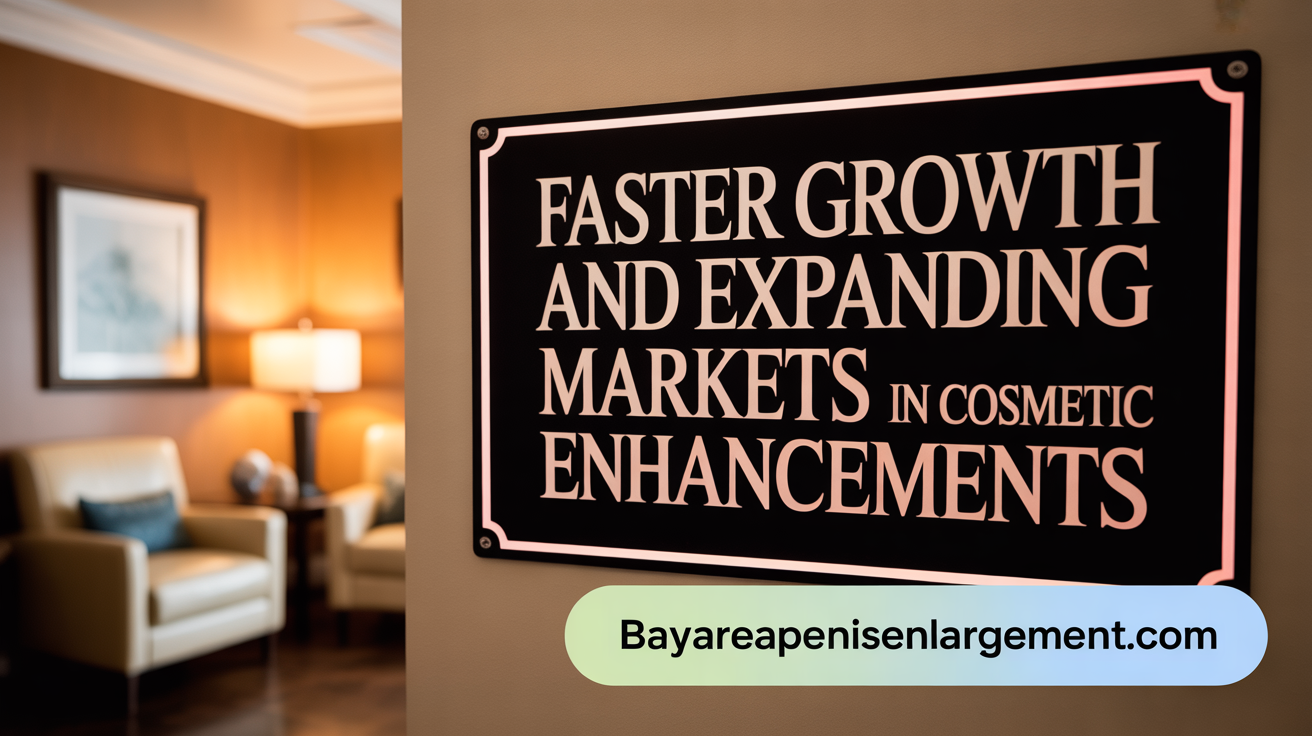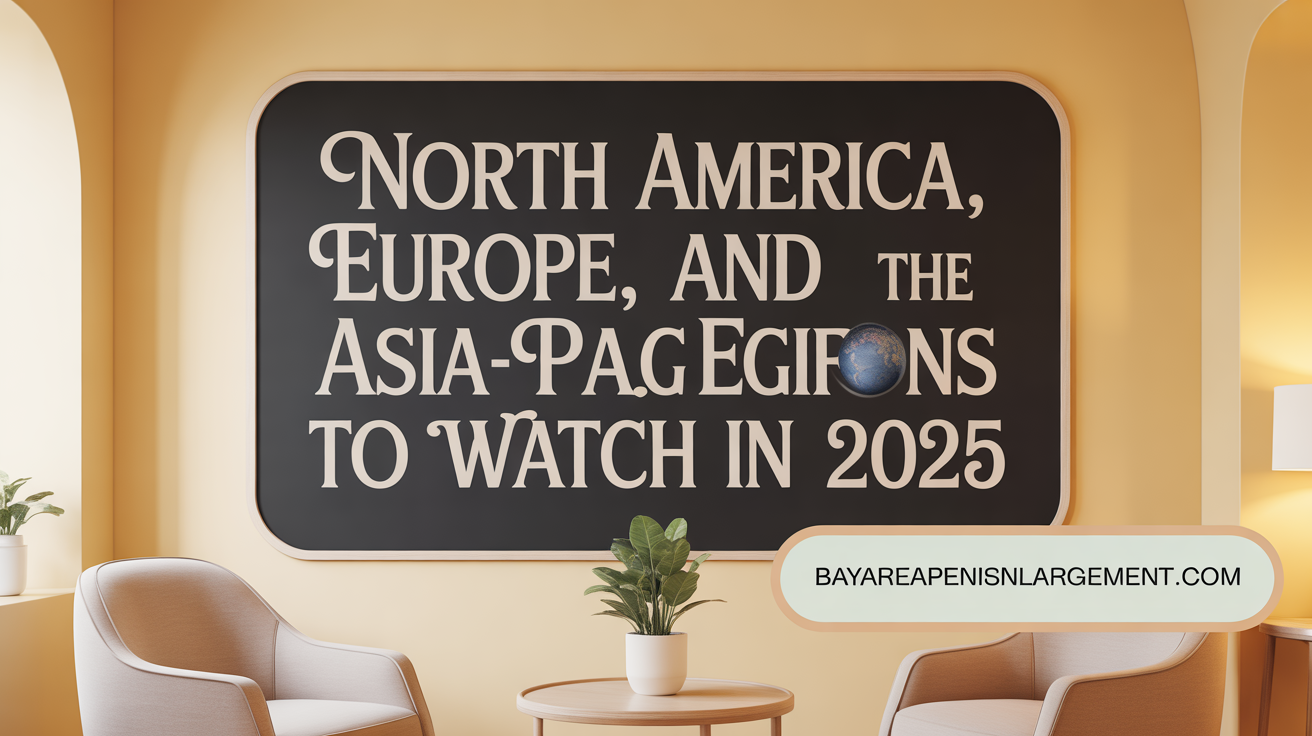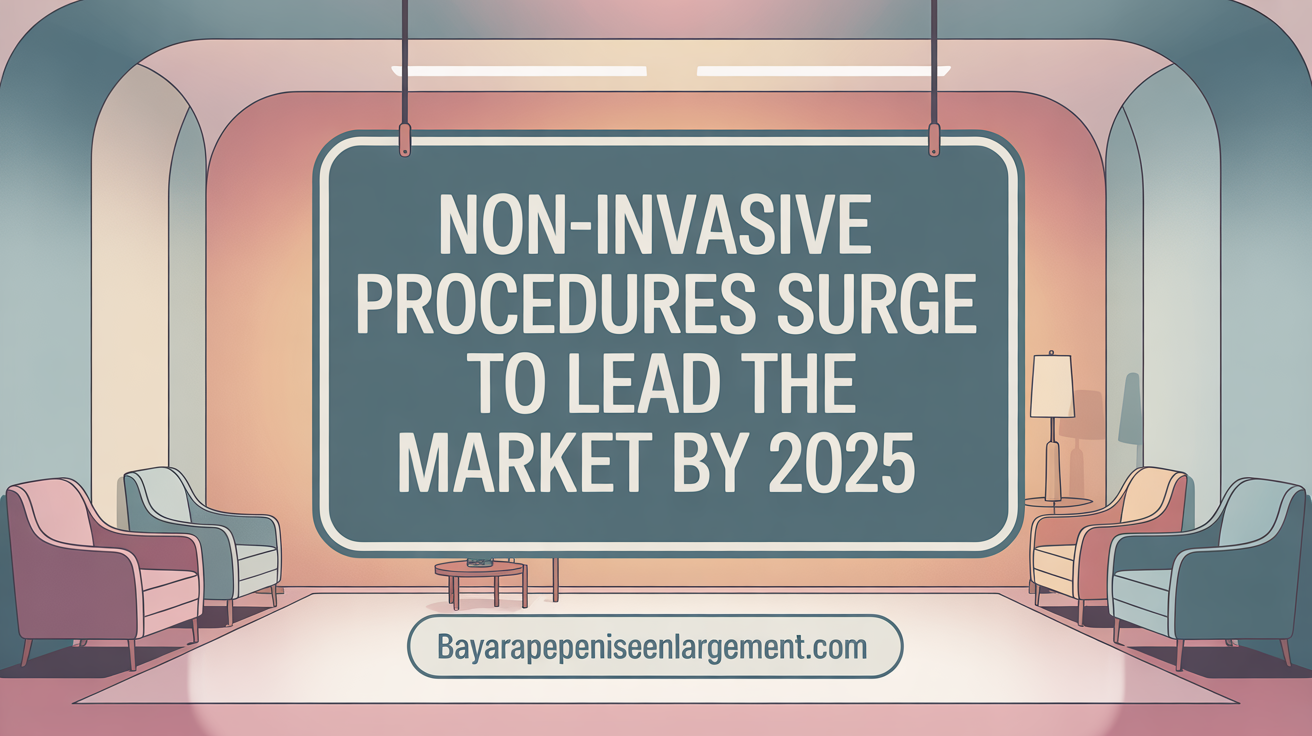Overview of the Aesthetic Enhancement Market in 2025
As advancements in cosmetic technology accelerate and consumer preferences evolve, the aesthetic enhancement market is rapidly transforming. By 2025, a pronounced shift is expected in the distribution of market share between non-surgical and surgical cosmetic procedures. This article explores the comparative sizes, growth trends, industry drivers, and competitive dynamics shaping the non-surgical versus surgical enhancement landscape globally, providing a comprehensive outlook for stakeholders and consumers alike.
Projected Market Share Distribution: Non-Surgical vs. Surgical in 2025
What is the projected market share distribution between non-surgical and surgical aesthetic enhancement procedures by 2025?
By 2025, non-surgical aesthetic procedures are expected to dominate the cosmetic enhancement market. These minimally invasive treatments, including Botox, dermal fillers, laser therapies, and skin rejuvenation techniques, are increasingly preferred due to their quick results, lower risk, and minimal downtime.
Current data shows that the global market for non-invasive procedures is sizable, with estimates indicating a value of approximately USD 22.67 billion in 2025. This reflects significant growth driven by technological advancements, societal acceptance, and consumer demand for less invasive options.
In comparison, the surgical segment remains substantial but is growing at a slower pace. The overall cosmetic surgery market is projected to reach around USD 36.35 billion by 2025, with surgical procedures such as liposuction, face lifts, and breast augmentations contributing to this figure.
The trend toward non-surgical treatments is supported by consumer preferences for procedures that offer convenience, affordability, and immediate results. As a result, non-invasive aesthetic treatments are expected to constitute approximately 60-70% of the combined market, highlighting their increasing dominance. This preference is also fueled by advancements in technology and broader societal shifts toward body positivity and youthful appearance.
In summary, by 2025, non-surgical procedures are poised to hold a larger share within the market, driven by consumer trends favoring minimally invasive options over traditional surgery.
Growth Rates and Market Size Comparison

How do the sizes, growth rates, and trends compare between non-surgical and surgical cosmetic enhancement markets leading up to 2025?
Leading up to 2025, the non-surgical cosmetic enhancement market is experiencing faster growth compared to the surgical market. Non-invasive procedures such as Botox, dermal fillers, and laser therapies are becoming increasingly popular, driven by technological advancements and a shift in consumer preferences for less risky, quicker treatments.
The non-surgical cosmetic segment is projected to grow at a compound annual growth rate (CAGR) of around 10.6% to 10.9%, reaching approximately USD 28.63 billion by 2025. Globally, this segment is part of a broader market expected to hit over USD 41 billion by 2034, highlighting its expanding influence.
In contrast, the surgical cosmetic market, which includes procedures like liposuction, breast augmentation, and facelifts, remains larger in overall size, estimated at about USD 22.64 billion in 2025. Its growth rate is comparatively slower, with a CAGR of approximately 3.8% to 5.4%. While traditional surgeries continue to hold significant market share, especially in regions like North America, the growth pace does not match that of non-invasive procedures.
Overall, a notable trend is the shift towards minimally invasive options. By 2025, the size of the non-surgical segment will constitute a considerable part of the overall aesthetic procedures market. This shift is driven by higher safety profiles, shorter recovery times, and technological innovations that make non-invasive treatments more effective and accessible. As a result, the market dynamics are increasingly favoring non-surgical procedures, with their market share expected to continue growing well into the future.
Technological Innovations Driving Market Dynamics

What industry insights, forecasts, and technological advancements are influencing the market dynamics between non-surgical and surgical aesthetic procedures through 2025?
The cosmetic surgery industry is experiencing rapid evolution driven by significant technological progress. Innovations such as FDA-approved Neotract Motiva implants, known for their natural look and feel, are boosting demand in surgical procedures. Meanwhile, 3D printing technology allows for the creation of highly personalized implants, enhancing customizability and patient satisfaction.
Emerging treatments like regenerative therapies—specifically exosomes and platelet-rich plasma (PRP)—are gaining popularity for their ability to promote skin rejuvenation and healing, reducing recovery times and improving results.
On the non-surgical front, advancements in laser technology—including fractional lasers, picosecond lasers, and radiofrequency (RF)—are delivering more effective and safer skin treatments. AI-powered skin analysis tools are also becoming standard, helping practitioners tailor treatments more precisely.
Market forecasts predict steady growth driven by a rising desire for subtle, natural results. Younger consumers increasingly seek body contouring and anti-aging procedures that require minimal downtime. Procedures like high-definition liposuction, combined with non-invasive techniques, are becoming popular choices.
Furthermore, innovations such as autologous fat grafting and combination therapies, which integrate multiple procedures for comprehensive aesthetic enhancement, are shaping consumer preferences.
Sustainability in materials and procedures reduces ecological footprints, aligning with eco-conscious trends. Overall, expected to continue through 2025, these technological advances emphasize safety, natural aesthetics, minimally invasive techniques, and digital integration—setting the stage for a dynamic, forward-looking industry.
Competitive Landscape and Market Segmentation Impact
How does market segmentation and the competitive landscape affect the future outlook of non-surgical versus surgical cosmetic enhancement methods by 2025?
The market for cosmetic enhancements is highly segmented by procedure type, demographic groups, and end-user settings, and this segmentation significantly influences future growth trends. Non-surgical procedures, including Botox, dermal fillers, and laser therapies, have seen rapid adoption due to their minimally invasive nature, shorter recovery times, and technological innovations. Companies like AbbVie Inc., Cynosure, and Alma Lasers are actively competing by developing advanced, safe, and more effective non-invasive devices, thereby fueling a market growth rate projected at around 10.9% CAGR from 2024 to 2025.
On the other hand, surgical procedures such as liposuction, breast augmentation, and facelifts continue to hold a considerable share, bolstered by demographic shifts like aging populations seeking anti-aging solutions. Though the surgical market's growth is slightly slower, ongoing breakthroughs and the demand for more complex aesthetic procedures sustain its relevance.
The competitive landscape fosters innovation, especially in non-invasive segments, with players investing in laser, ultrasound, and RF technologies. As these companies vie for market share, a shift toward less risky, more accessible aesthetic options becomes evident.
Overall, the dynamic between segmentation and competition propels a market landscape where non-surgical procedures are expected to dominate further, capturing a larger share of the aesthetic enhancement market by 2025. This trend is reinforced by consumer preferences for quick, low-risk treatments and technological advancements, which make non-invasive options more appealing to a broad demographic including younger adults and aging populations.
Regional Market Trends: Global Hotspots in 2025

North America dominance and healthcare infrastructure
North America continues to lead the global cosmetic surgery market in 2025, accounting for over 42.84% of the industry share in 2023. This region benefits from advanced healthcare infrastructure, high technology adoption, and a strong societal acceptance of aesthetic procedures. The United States is a major contributor, with a market value of USD 7.38 billion in 2024, poised to grow to around USD 15.55 billion by 2034, reflecting a CAGR of 7.60%. Hospitals and specialty clinics remain the primary providers, though there’s an increasing trend towards med spas and cosmetic centers.
Europe's rapid growth and aging population
Europe is projected to experience the highest CAGR during the forecast period, approximately 15.60%. Countries like Germany and the UK are leading this growth, driven by technological advancements in minimally invasive procedures and an aging population seeking anti-aging treatments. Europe’s well-established healthcare infrastructure and high disposable incomes fuel this expansion, making it a significant market for both surgical and non-surgical procedures.
Asia-Pacific's emerging opportunities
The Asia-Pacific region shows the most promising growth prospects, driven by rising disposable incomes, expanding medical tourism, and increasing awareness of aesthetic procedures. Countries such as China and India are experiencing substantial market increases, with the region's market size expected to grow at the highest CAGR among global regions. The region's lower costs and growing standards of living support a surge in demand for both surgical and non-invasive procedures, positioning Asia-Pacific as a critical area for industry expansion.
| Region | Market Share (2023) | Expected CAGR | Growth Drivers | Key Countries |
|---|---|---|---|---|
| North America | 43% | 7.60% | Technological adoption, healthcare infrastructure | US, Canada |
| Europe | 30% | 15.60% (highest) | Aging population, tech advancements | Germany, UK |
| Asia-Pacific | 20% | Highest among regions | Disposable income, medical tourism | China, India |
Understanding these regional trends provides insight into where the massive growth potential lies in the global cosmetic enhancement market for 2025 and beyond.
Demographic Shifts Influencing Market Demand
Which age groups have the highest market share and fastest growth?
The 35 to 50-year-old segment held the largest share in 2024, capturing approximately 19% of the market. Meanwhile, the 19 to 34-year-old group is experiencing the fastest growth rate among age demographics. This younger group adopts aesthetic procedures to maintain a youthful appearance and follow social media trends.
As the aging population continues to seek anti-aging treatments, the 35-50 age group remains a significant part of the market, but the increasing popularity among younger adults drives rapid growth in procedures like Botox and dermal fillers.
How is gender-based segmentation evolving?
Historically, females dominated the market, holding the highest share in 2024. However, the male segment is projected to grow at the fastest CAGR in the upcoming years. This shift is attributed to changing societal norms, increased acceptance, and growing awareness of male aesthetic procedures.
Men are increasingly seeking cosmetic treatments such as Botox, hair removal, and skin tightening, contributing to diversified market dynamics.
What about societal acceptance and emerging segments?
Societal acceptance of cosmetic procedures has risen significantly, influenced by beauty standards, media portrayals, and social media influence. Non-invasive and minimally invasive procedures like Botox, dermal fillers, and laser treatments continue to dominate due to their safety and convenience.
New segments are emerging, including gender-affirming surgeries and treatments aimed at specific ethnic groups. The trend toward inclusivity and personalized aesthetic solutions is expanding market opportunities.
| Segment | 2024 Data | Future Trends | Remarks |
|---|---|---|---|
| Age Group 19-34 | Fastest growing segment | Higher adoption for anti-aging and maintenance | Younger adults embracing aesthetic norms |
| Age Group 35-50 | Highest market share in 2024 | Continued dominance due to aging concerns | Mature market segment with steady growth |
| Female Population | Highest market share | Slower growth compared to males | Market traditionally dominated, but shifting |
| Male Population | Growing fastest in CAGR | Increased societal acceptance | Rising popularity of male-specific aesthetic procedures |
Role of Social Media and Consumer Behavior
Influence on procedure popularity
Social media has revolutionized the way consumers perceive beauty and cosmetic procedures. Platforms like Instagram, TikTok, and Snapchat showcase influencers and celebrities sharing their aesthetic journeys, making procedures like Botox, dermal fillers, and rhinoplasty highly desirable. The constant exposure to idealized images boosts demand among a broad demographic, especially younger audiences.
Impact on demand for minimally invasive treatments
The rise of social media has significantly increased interest in minimally invasive treatments. Procedures that offer quick results with minimal downtime, such as Botox injections and laser therapies, are favored because they align with busy lifestyles. The visibility of fast, effective transformations on social media feeds encourages more people to try non-surgical options as a safer, less risky alternative to traditional surgery.
Changing beauty standards and self-esteem trends
Social media fosters new beauty standards, emphasizing flawless, youthful appearances. This shift impacts self-esteem, prompting individuals to seek cosmetic procedures to meet these evolving ideals. As societal acceptance of aesthetic enhancements grows, more consumers view cosmetic procedures as part of self-care and confidence boosting practices, fueling the ongoing expansion of the market.
Emergence of Non-Invasive Procedures as Market Leaders

Market share superiority of non-invasive treatments in 2025
By 2025, non-invasive cosmetic procedures dominate the global aesthetic market, holding over 58% of total revenue. Treatments like Botox, dermal fillers, and laser therapies are preferred by many due to their minimally invasive nature, quick results, and reduced recovery time. This trend reflects a shift in patient preferences towards safer and less risky options compared to traditional surgical procedures.
Factors driving preference for injectables and laser therapies
Several technological advancements have propelled the popularity of injectables like Botulinum toxin, which alone accounts for about 35% of the market share in 2025. Innovations in laser technology, such as fractional lasers and picosecond lasers, also contribute significantly. These tools offer effective skin rejuvenation, hair removal, and skin tightening with minimized discomfort and downtime. The convenience and safer profile of these procedures make them highly attractive.
Patient demand for reduced recovery time and safety
Modern aesthetic consumers increasingly seek treatments that require minimal recovery, aligning with busy lifestyles. Safety concerns, such as skin irritation, burns, and hyperpigmentation, have historically limited some procedures but technological improvements now greatly lessen these risks. As a result, more patients are willing to opt for non-invasive options, fueling their rapid growth in the market.
| Aspect | Detail | Impact on Market |
|---|---|---|
| Procedure Type | Botox, dermal fillers, laser treatments | Leading share with high growth rate |
| Market Share (2025) | Over 58% for non-invasive procedures | Dominance in overall aesthetic industry |
| Technological Impact | Innovation in laser and injectables | Increased safety and efficiency |
| Patient Preference | Quick results, minimal downtime | Rising demand for non-surgical options |
Understanding these trends is vital for industry players aiming to meet customer expectations and capitalize on the evolving landscape of aesthetic treatments.
Hospitals, Clinics, and Spas: Evolving End-User Landscape
Who holds the largest market share among provider segments?
Hospitals and specialty clinics are currently the dominant players in the aesthetic procedures industry, capturing the largest share of the market. In 2024, hospitals and clinics held over half of the market, primarily because of their capacity to perform a wide range of both surgical and non-invasive procedures. Their advanced infrastructure and ability to handle complex cases make them the preferred choice for many patients.
How are spas and cosmetic centers contributing to market growth?
Spas and cosmetic centers are rapidly expanding their offerings, primarily focusing on minimally invasive and non-surgical procedures like Botox, dermal fillers, and laser treatments. This segment is experiencing the highest growth rate, with projections indicating a CAGR of around 16.75%. These centers appeal to consumers looking for quick, affordable, and less invasive treatments, which boosts overall market expansion.
What role does medical tourism play in shaping the industry?
International medical tourism significantly influences demand, especially in regions like Asia-Pacific and the Middle East. Countries like India, Thailand, and Turkey attract global patients seeking high-quality, affordable aesthetic procedures. This trend not only increases the volume of procedures but also encourages local clinics and hospitals to upgrade their technology and services to stay competitive.
| Provider Segment | Market Share (2024) | Growth Trends | Regional Impact |
|---|---|---|---|
| Hospitals & Specialty Clinics | >50% | Steady growth driven by complex surgical procedures | North America leads, but Asia-Pacific is rising rapidly |
| Spas & Cosmetic Centers | Rapid growth | Focused on minimally invasive treatments like Botox & fillers | Expanding presence across all regions |
| Influence of Medical Tourism | Significant | Boosts local industry and technology adoption | Particularly strong in Asia-Pacific and Middle East |
Challenges and Restraints Impacting Market Expansion
Safety and side-effect concerns
One of the main hurdles hindering market growth is the worry over safety and potential side effects of cosmetic procedures. While technological advancements have improved safety profiles, issues such as skin irritation, burns, hyperpigmentation, scarring, and other adverse reactions can occur, causing patient hesitancy.
Regulatory and certification barriers
Stringent regulations and certification requirements for devices and procedures also pose challenges. These barriers can slow down the approval process for new technologies and limit market entry for emerging players, thereby hindering rapid market expansion.
Market limitations and patient hesitancy
Despite increasing interest, some patients remain cautious due to concerns about the risks, costs, and permanence of certain procedures. The fear of complications or unsatisfactory results causes hesitancy, which can temper market growth even as technological innovations attract new consumers.
Understanding these constraints is vital for stakeholders aiming to expand the reach of both surgical and non-surgical aesthetic procedures, ensuring safety and patient confidence are prioritized.
Future Outlook and Strategic Implications for Stakeholders
What is the projected market size and CAGR beyond 2025?
The global cosmetic surgery market is expected to continue its upward trajectory beyond 2025, with projections indicating that it will reach approximately USD 181 billion by 2033. This growth reflects a compound annual growth rate (CAGR) of roughly 9.98% over that period.
Specifically, the non-surgical segment, which currently dominates the market, is forecasted to grow from USD 95.42 billion in 2025 to about USD 299 billion in 2033 at a CAGR of over 15.35%. The non-invasive aesthetic treatment market size is also poised to expand significantly, from USD 21 billion in 2024 to approximately USD 41.55 billion by 2034, at a steady CAGR of 7.00%.
Meanwhile, the overall market for cosmetic devices and procedures, including both surgical and non-surgical options, is set to grow robustly. For example, the medical aesthetic devices market alone may reach USD 51.34 billion by 2034, growing at about 10% annually.
What are the implications for investors and industry players?
For investors, this growth signals a resilient and expanding industry with promising opportunities across multiple segments. The increasing demand for minimally invasive and non-invasive procedures offers avenues for investment in innovative technologies, such as laser devices, RF, ultrasound, and AI-powered skin analysis tools.
Industry players should focus on technological advancements, safety, and expanding distribution channels to capitalize on the rising consumer awareness and preference for quick, effective treatments. Companies like Allergan, Johnson & Johnson, and MedSpa service providers are well-positioned but must continue innovation to stay competitive.
Furthermore, regional markets such as Asia-Pacific, with its high CAGR driven by medical tourism and rising incomes, present significant opportunities for expansion.
What is the forecast for evolving consumer preferences and innovation?
Consumer preferences are shifting towards less invasive, safer, and quicker results, with non-surgical procedures leading growth. The popularity of treatments like Botox, dermal fillers, and laser therapies is expected to persist, driven by societal acceptance and the influence of social media.
Innovation will likely remain central to market evolution. Developments in laser technology, AI-powered diagnostics, and new injectable formulations are anticipated to enhance outcomes and safety profiles. As safety concerns decrease with technological improvements, demand for these procedures is expected to accelerate.
This evolving landscape emphasizes the importance for stakeholders to invest in research, prioritize safety, and adapt quickly to changing consumer trends to maintain competitive advantage in this dynamic industry.
Summary and Strategic Insights for the 2025 Market
By 2025, the aesthetic enhancement market will be defined by a dominant shift toward non-surgical procedures, driven by technological innovation, evolving consumer expectations, and competitive market forces. Non-surgical treatments are set to capture approximately 60-70% of the combined market share, reflecting their rapid growth, accessibility, and preference for minimally invasive approaches. Despite the enduring significance of surgical procedures, the comparatively slower growth forecasts underscore a market pivot influenced by convenience and safety. Regional leadership by North America, emergent opportunities in Asia-Pacific, and demographic changes will continue to shape global trends. For stakeholders, strategic focus on innovation, regional expansion, and consumer-centric solutions in non-invasive treatments will be critical to capitalizing on growth opportunities in the competitive landscape of cosmetic enhancement by 2025.
References
- US Cosmetic Surgery Market Size, Share, Trends, Forecast 2025-2034
- Cosmetic Surgery Market Dynamics, Shares and Trends by 2034
- Non-Surgical Cosmetic Procedures Market Report 2025 - Growth
- Non-Invasive Aesthetic Treatment Market Size to Hit USD 41.55 ...
- Cosmetic Surgery and Procedure Market Size is Projected to
- Non-Invasive Aesthetic Treatment Market Size, Top Share, Forecast ...
- Cosmetic Surgery Products Market Demand 2025-2035
- Canada Aesthetic Procedures Market Growth Rate, Industry Insights ...
- Non Surgical Cosmetic Surgery Market Report 2025 (Global Edition)
- Cosmetic Surgery Market Analysis Growth Trends 2025-2033

